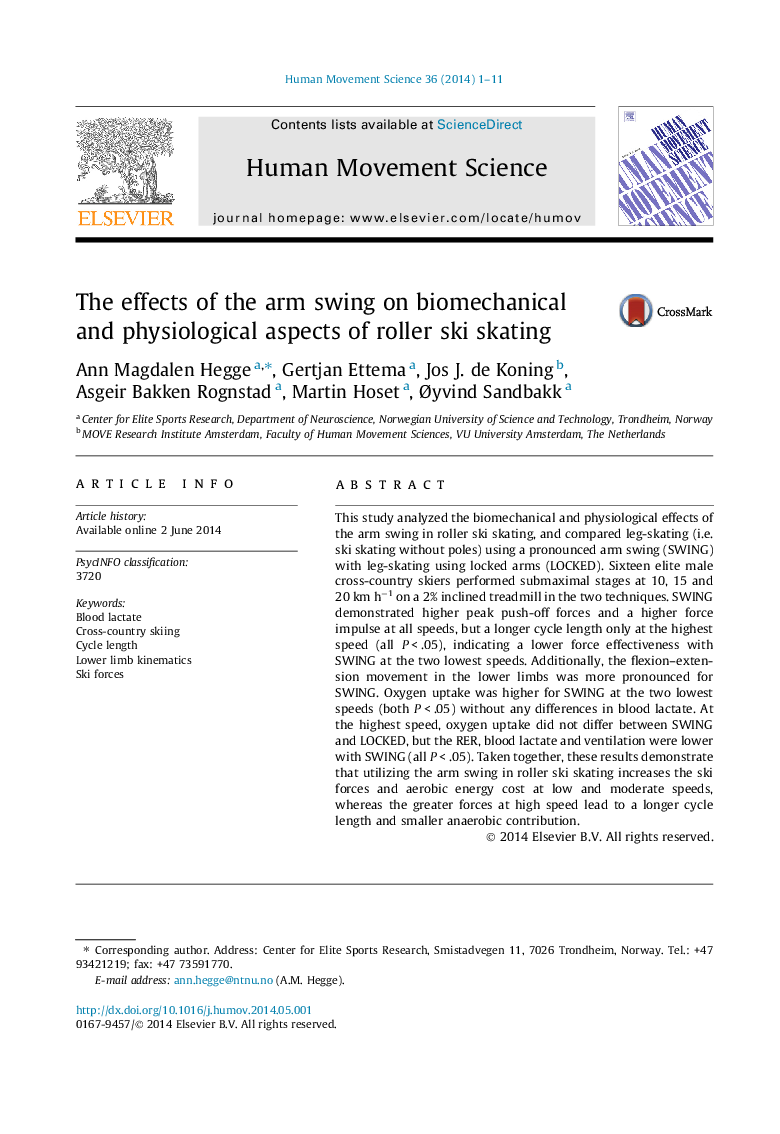| کد مقاله | کد نشریه | سال انتشار | مقاله انگلیسی | نسخه تمام متن |
|---|---|---|---|---|
| 928318 | 1474229 | 2014 | 11 صفحه PDF | دانلود رایگان |
• The arm swing does not enhance the propulsive forces at low and moderate speed.
• The arm swing increases the aerobic cost at low and moderate speed.
• The arm swing leads to increased propulsive forces at high speed.
• The arm swing results in a smaller anaerobic contribution at high speed.
• The arm swing is a cost at low and moderate speed, but beneficial at high speeds.
This study analyzed the biomechanical and physiological effects of the arm swing in roller ski skating, and compared leg-skating (i.e. ski skating without poles) using a pronounced arm swing (SWING) with leg-skating using locked arms (LOCKED). Sixteen elite male cross-country skiers performed submaximal stages at 10, 15 and 20 km h−1 on a 2% inclined treadmill in the two techniques. SWING demonstrated higher peak push-off forces and a higher force impulse at all speeds, but a longer cycle length only at the highest speed (all P < .05), indicating a lower force effectiveness with SWING at the two lowest speeds. Additionally, the flexion–extension movement in the lower limbs was more pronounced for SWING. Oxygen uptake was higher for SWING at the two lowest speeds (both P < .05) without any differences in blood lactate. At the highest speed, oxygen uptake did not differ between SWING and LOCKED, but the RER, blood lactate and ventilation were lower with SWING (all P < .05). Taken together, these results demonstrate that utilizing the arm swing in roller ski skating increases the ski forces and aerobic energy cost at low and moderate speeds, whereas the greater forces at high speed lead to a longer cycle length and smaller anaerobic contribution.
Journal: Human Movement Science - Volume 36, August 2014, Pages 1–11
